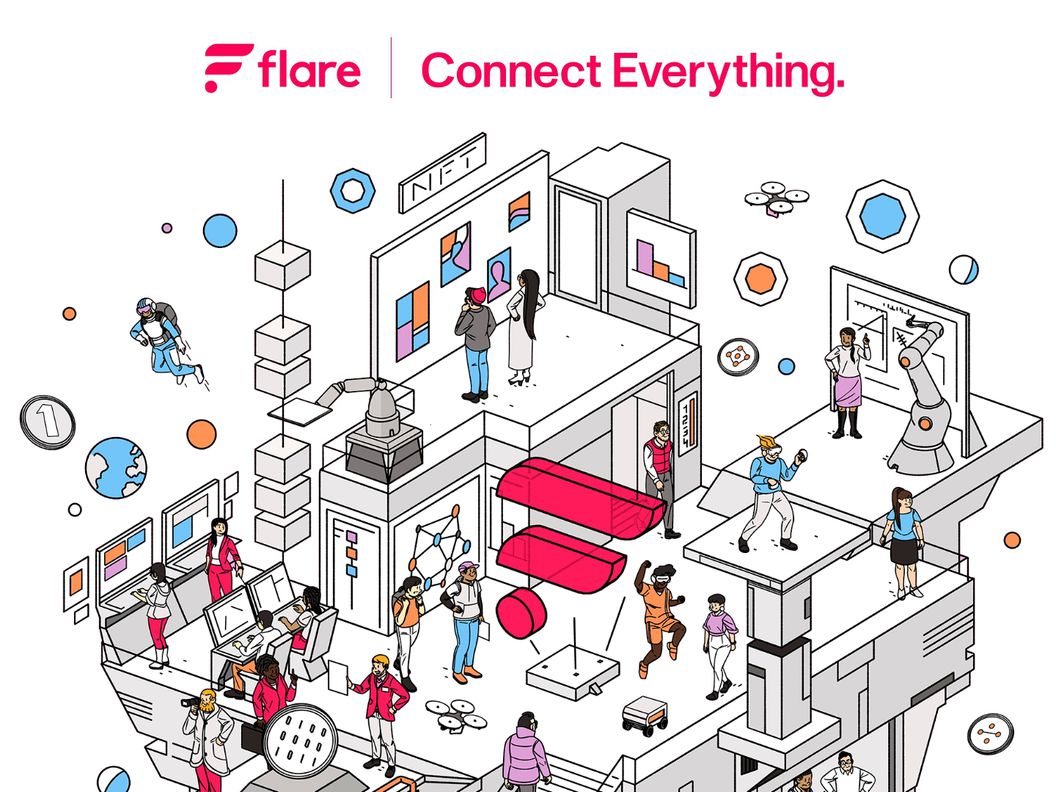
Layer-2 networks and scaling solutions have been getting a lot of attention from crypto enthusiasts and analysts of late, but what about the much-needed innovation in decentralized application (dapp) functionality?
The total size of the application-based industry is approaching $500 billion in market capitalization (with DeFi comprising a $48 billion TVL), but its growth has been limited by factors such as UI/UX and, fundamentally, the lack of utility for most people. To grow further, blockchain needs more applications that are more relevant for more people.
One way this could happen is by increasing the variety of securely-acquired real-world and blockchain data available for use in dapps on-chain. Companies such as Chainlink are innovating in the data oracle space to deliver this. However, as more dapps emerge and daily active user numbers grow, so too will the opportunity for oracles that can trustlessly provide more types of data while facilitating fast, secure transactions at the smart contract execution level.
Recently-launched Flare has done just this, building the Layer-1 for data.
Driving the development of more useful real-world apps
Right now, blockchains are difficult to use and dapps are difficult to navigate. As an EVM-compatible Layer-1 with oracles secured by the network, Flare is built to enable open, decentralized and safe interoperability between blockchains and also between blockchains and web2 APIs.
Developers need technology stacks to build dapps that can securely access a more diverse array of data. A simple example could be providing decentralized access to the memo field of a transaction on a different blockchain. This memo field might contain a payment reference that could in turn trigger the execution of a smart contract. A more involved example could be enabling a trustless connection with a banking API to power smart contract execution.
Flare’s objective is to enable innovative real-world applications by giving developers access to more types of data in a decentralized manner. Flare’s suite of protocols and tools help developers securely acquire time series data (including cryptocurrency price data) and event data from other blockchains and Web2 APIs for use in dapps running on Flare. Flare’s two core protocols, the State Connector and Flare Time Series Oracle (FTSO), assist in operationalizing EVM-based smart contracts and the dapps that depend on them. Data can be provided trustlessly when independent decentralized nodes are incentivized to provide accurate data.
The State Connector: Connect everything
Fully-interoperable multi-chain ecosystems will require mechanisms to securely query information that is external to an individual blockchain. Such information can include “state acquisition,” which gives the status of a transaction, including whether the transaction took place and when. An example use case for this type of data could be triggering a smart contract action with a payment made on another chain. In the case of dapps running on Flare, the State Connector allows the network to acquire transaction information from other chains. It also allows smart contracts to be self-executed based upon information brought from off-chain sources.
Securing blockchains and the transactions that happen over them can take a number of different forms. The State Connector has a binary forking protocol and an additional security measure where individual validators can define local attestation providers. These independent local attestation providers can trigger a validator to branch if a threat is perceived.
The validator can then remain in a safe, idle state until the situation is resolved. Unlike proof of stake mechanisms, attestation providers are not required to stake value, and the security of the State Connector is not limited by the amount staked in the system. This means that the system is capable of handling large amounts of value and that transactions of all values can be handled securely. This robust, secure, developer-enabling protocol can thus play a significant role in the decentralized economy.
Flare Time Series Oracle (FTSO)
Scalable EVM-based smart contracts require accurate and robust on-chain decentralized data feeds and secured relay of data. The FTSO is a highly decentralized data feed oracle that supports the provision of reliable price data, with almost 100 independent data providers incentivized to provide reliable data every 3 minutes. The FTSO will also deliver other off-chain data available for use in on-chain dapps, including time series data such as weather or grain and commodity prices for insurance purposes.
Making blockchain more useful
According to Hugo Philion, CEO & cofounder of Flare, “We need more useful decentralized applications. Flare is tackling this through data, not just prices but transaction details, Web2 events, etc, so that developers can build applications that provide more utility to a larger group of users.”
There is still a lack of real-world utility being observed at scale in Web3 technologies due in part to a lack of securely acquired off-chain data available for use in on-chain dapps. Decentralized access to high-integrity data from other blockchains and Web2 internet sources enables the creation of new use cases and monetization models. The FTSO and the State Connector make more types of off-chain data available for use in on-chain dapps, securely, scalably and trustlessly.
So who stands to benefit from the technical advancements in Layer-1 interoperability and oracle networks? Gains in interoperability and data acquisition and validation mechanisms will be of great help to web3 developers, especially those focused on web2 to web3 composability. But developers are not the only ones who will be able to take advantage of improved data oracle tooling. Participants in data DAOs (decentralized autonomous organizations) and machine learning practitioners wanting to develop and sell algorithms and datasets or make use of DataUnions need means of porting data. The users of both DeFi and NFT protocols also stand to win, as token exchanges increasingly take up and make use of accurate, fast, decentralized price feeds. Data oracles and the protocols that power them will play an increasingly important role in achieving real-world utility in the future decentralized economy by helping developers to obtain securely acquired off-chain data available for use in on-chain dApps.
